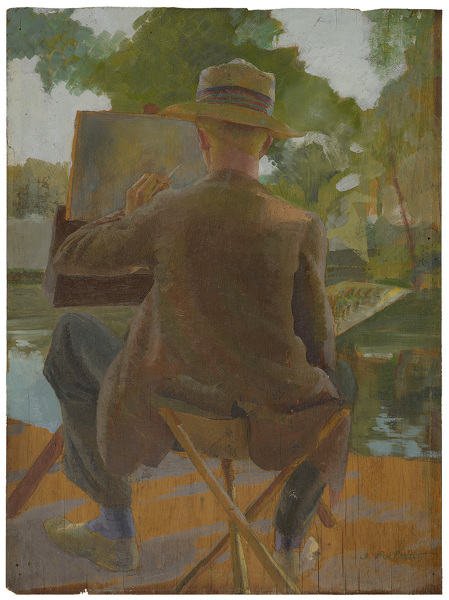

 Hover over the painting to magnify (there may be an initial delay while the magnified image is loaded)
Hover over the painting to magnify (there may be an initial delay while the magnified image is loaded)Jacqueline Pietersen (1899-1984):
Charles Cundall at Work, circa 1920
Unframed (ref: 7306)
Signed
Oil on board
See all works by Jacqueline Pietersen oil panel artists at work landscape leisure men 1.PORTRAIT OF AN ARTIST WOMEN
Provenance: The Artist's Studio
Literature: Charles Cundall, (Brian Foss, William Gaunt and Andrew Lambirth), A Working Method, Liss Llewellyn, 2016, illustrated as frontispiece.
Llewellyn, Sacha, and Paul Liss. Portrait of an Artist. Liss Llewellyn, 2021, p.221.
Jacqueline Pietersen (1899- 1984) studied at the Royal College of Art, where she met her future husband Charles Cundall . They were married in 1923 and lived in Paris. She exhibited regularly at The Royal Academy and the New English Art Club
 Unsung Heroines
Unsung Heroines Private collection
Private collection




